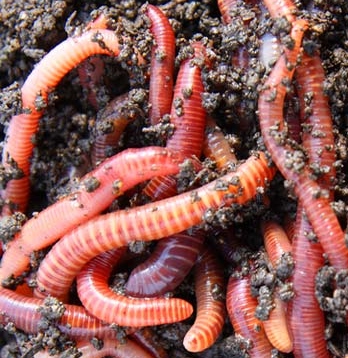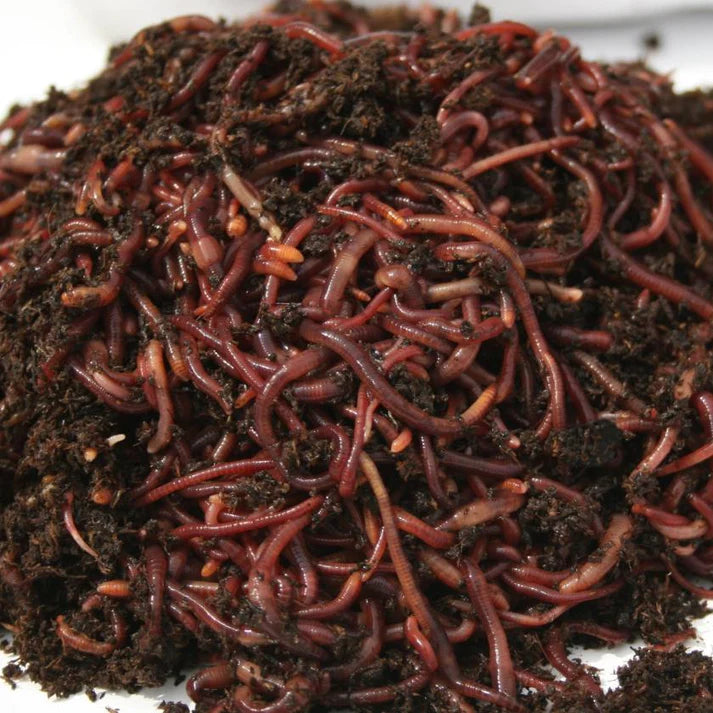The Basic Principles Of Red Wiggler Express
Table of ContentsRed Wiggler Express - Questions8 Simple Techniques For Red Wiggler ExpressThe smart Trick of Red Wiggler Express That Nobody is Talking AboutRed Wiggler Express Fundamentals ExplainedNot known Facts About Red Wiggler Express
It's secure to claim this stuff would certainly have been great to add as a to vermicomposting systems! And the thriving Red Worm population? It just never occurred. Even in the stack that was established straight in front of backyard composters with existing Red Worm colonies. These nutritionally-boosted timber chip habitats are definitely filled with Lumbricus sp.
Numerous selections, consisting of Red Wigglers, European Nightcrawlers, and Lumbricus species were brought over from the European continent. Below's the thingNative or not - and as skilled as they are at being able to endure in a wide-range of environments and conditions -. Simply put, they are much extra most likely to socialize in any type of active composting systems you have actually established, than they are to wander off and start spoiling the atmosphere.
Roots call for oxygen for respiration and count on smooth airflow within the soil to prosper. Nonetheless, when it rainfalls, dirt can come to be saturated with water, decreasing the oxygen offered and hindering nutrient absorption - Red Wigglers For Sale. To maintain an ideal balance, the dirt should enable water to drain properly, leaving enough space for air to sustain root health
Red Wiggler Express for Dummies

When it comes to worms for composting, what comes to mind? If you were an earthworm breeder, dealer, or simple garden enthusiast, after that you 'd understand that red wiggler worms are the excellent worms for vermicomposting. To find out more concerning these planet marvels, reviewed some of the red worm realities below.
(https://celestialdirectory.com/gosearch.php?q=Red+Wiggler+Express&search-btn.x=5&search-btn.y=14)However if they stretch their bodies, you'll be able to see the stripes on their skin. When increasing worms such as red wiggler worms, you should have the ability to know how to profit them. When you have the ability to preserve and care for their habitat well, and likewise feed them the right type of natural wastes, after that they'll have the ability to create nutrient-packed and quality-rich worm spreadings for you (also understood as worm poop or garden compost).
Excitement About Red Wiggler Express
What do worms eat? Well, these red wriggler worms can be fed with cooking area scraps and yard wastes. Any type of rotting natural stuff will do like veggie and fruit peels, smashed egg coverings, utilized tea bags, coffee grounds, lawn clippings, dry fallen leaves, and others. Yet ensure not to feed them foods that are oily, citrusy, or has meat or dairy in them. Where To Buy Worms.

This behavior makes them fit forever in worm bins, garden compost piles, and other restricted areas where natural waste is bountiful. Producing an optimum setting for red wigglers requires a thoughtful strategy. Consider the complying with necessary elements to care for red wigglers at home and guarantee their health: Utilize a bedding of shredded paper or cardboard.

Include a handful of completely dry, shredded paper if the bin becomes also damp. They do! Red wiggler worms replicate by laying little, lemon-shaped eggs in protective cocoons. These cocoons are typically deposited in the bed linen and hatch into child worms within a couple of weeks. The quick recreation cycle of red wigglers is just one of the factors they are preferred for vermicomposting.
The Single Strategy To Use For Red Wiggler Express
Their adaptability and resilience have made them a prominent choice for vermicomposting in numerous areas worldwide. Yes! They can make it through from an array of 32F to 90F. They are very versatile critters. Think about safety actions for really severe temperature levels such as: Shielding the worm container with layers of straw or leaves.

When caring for your red wigglers it is very important to keep in mind to: 1) K.I.S.S (Keep it Simple) and 2) everything in moderation. These guidelines apply to feeding your garden compost worms, watering your worm containers, and almost everything else associated with caring for them. Simply bear in mind - you can always add even more food later (but it's tough to get rid of feed once it's been included to a container!).
Since I fed the red wigglers and compost worms also a lot, they weren't able to keep up and over time the older food went leftover and produced anaerobic conditions that killed the worms. Below're the 6 golden guidelines for just how often and how much to feed your worms: Regulation # 1: Moderation!
The smart Trick of Red Wiggler Express That Nobody is Talking About
Uneaten food will cause anaerobic conditions that will eliminate your real-time worms. It is okay to spray a little of their initial bed linens (which should currently be in the container) over the food, however the food should never be hidden and must be noticeable to your eye. Guideline # 5: See regulation # 1! Regulation # 6: After the first feeding, feed the worms 1/3 to 1/2 of their weight.